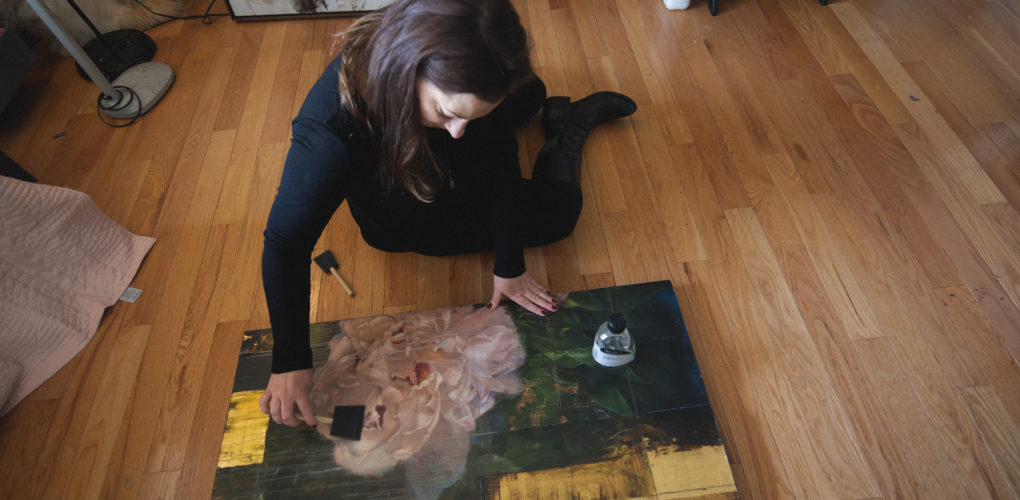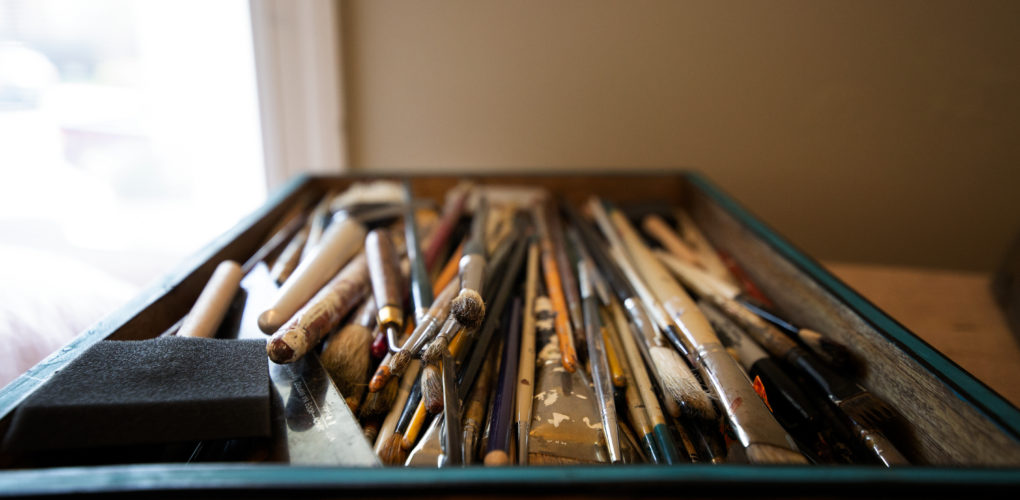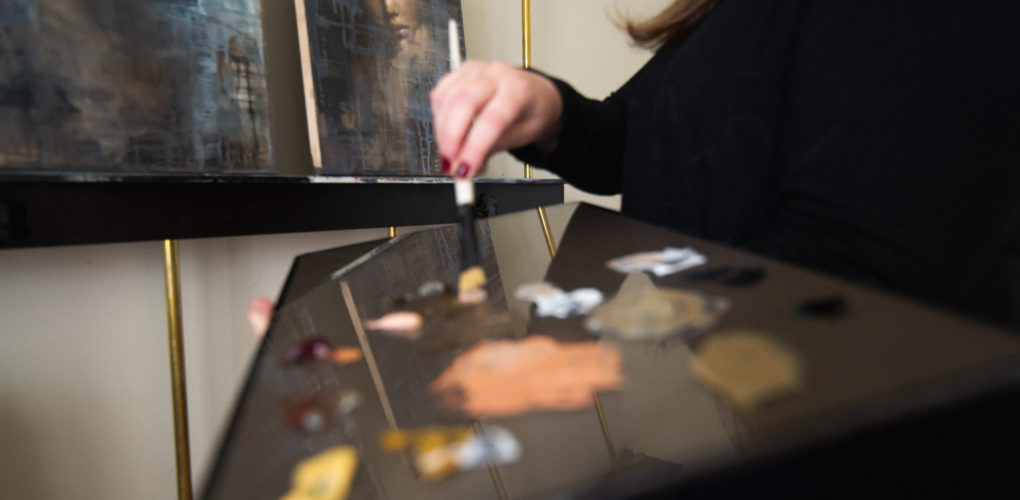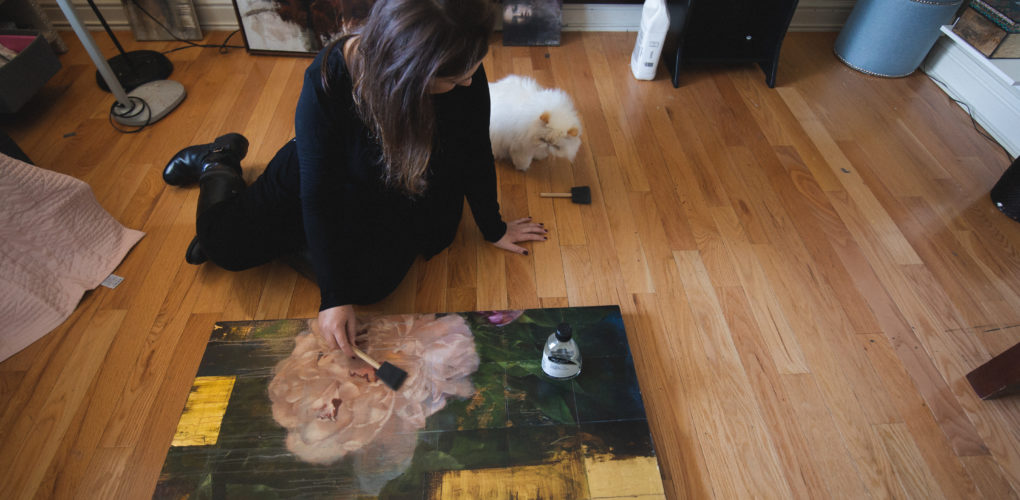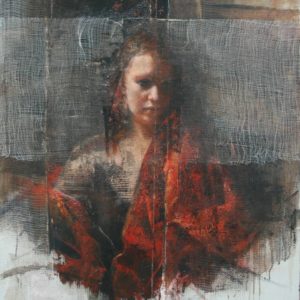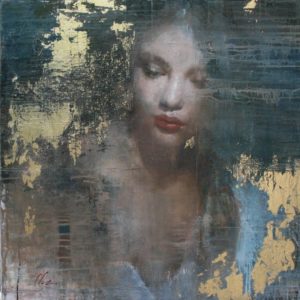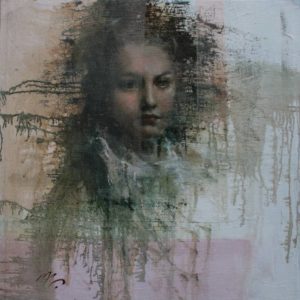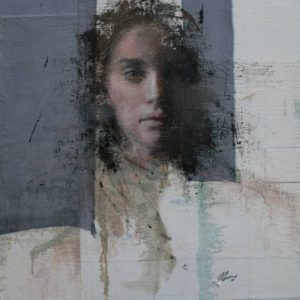Inside the Studio
 Mara Light: The Unpredictable Process of Layering
Mara Light: The Unpredictable Process of Layering
What are the major themes you pursue in your work?
I generate the ideas and concepts, with the painting process itself. The unpredictable nature of the layering of materials that I use between the paint, covers, and at the same time, emphasizes areas, and concepts or metaphors, as I go. Each step is a reaction to the one before. It is a constant building up of an image and tearing it down. For me, the more layers I paint, the more interesting and thought provoking the surface becomes. This is a metaphor for humans and how we are shaped by what we have experienced in some form or another. I use transparent materials between the layers of paint so that the paint stages, or traces underneath, show through, always seeing the steps before. My intention is to arrive at a balance between the order and the chaos, light and dark, and tradition and expression, always searching for the balance, as I do in life. The paintings begin to have a life of their own that is not really in my control.
How did you first get interested in your medium, and what draws you to it specifically?
I first became interested in oil painting as a teenager. My mom spent many years as a painter and she encouraged me take classes during my high school years. The Art Center was a short drive away and they had a painting class on the weekend. I was instantly hooked on painting from life in oil. It was fun and felt natural for me. I love the history behind painting. You can look back in history and know that you are using the same materials as the great masters. It gives me perspective on my progress or lack of progress as well! I love the way you can add layers to oil paint. You can completely wipe out an area with thick paint, or you can add the thinnest layers for transparent glazes. The colors I can achieve with oil can’t be matched with other mediums.
How has your style and practice changed over the years?
I have experimented with many styles over the years. During my college years, in the early 90’s, only conceptual art was encouraged. During that time, I was doing outdoor installations incorporating nature. I was very inspired by Christo! After college, I slowly began painting and was very free and expressive. I incorporated collage elements in a very bold way as part of my figurative paintings. My art shifted when I began painting in a photo realistic style, with acrylics, for a job I had taken full time. The job lasted six years and became what I have had to undo since. It was a lot easier learning photo realism, than it was unlearning it! The turning point in my painting came when I showed David Leffel, (whom I consider a teacher that has mastered painting) some of my paintings, and he said they were not paintings but rather drawings with paint! Since that time, I have been teaching myself how to paint!
Can you walk us through your process? Do you begin with a sketch, or do you just jump in? How long do you spend on one work? How do you know when it is finished?
My process is different every time I do a painting. I always jump in without a sketch or thought to where I want the painting to go. Because this way of working can cause compositional problems, I finally realized that it may be better to paint on a larger canvas and then cut the painting to my desired composition, and then adhere it to a panel when finished. This allows me to not feel so confined in the early stages. I need the painting to develop on its own. I always begin with a model or photograph of a model. Sometimes the subject of a painting changes two or three times. If I find the painting is not flowing, I will change the model(subject) until it is working. I use collage elements on the canvas before I start as well as in between paint layers. I use razor blades to scrape, scratch, or remove areas of the paint. Sometimes I will remove a collage area and the previous painting underneath will still be intact. I like to have many different techniques that are unpredictable and may eventually ruin the painting. It is my way of imitating the control and chaos I experience in everyday life. I can spend as little as one day or as much as one year on a painting. I find that they have a life of their own and I usually feel more like I am watching a process unfold rather than creating something. If I am controlling the process, the painting doesn’t have the same “life” to it, so then I paint over it and start again.
What was the best advice given to you as an artist?
The best advice given to me was to use brush strokes! To use your whole arm rather than your wrist. We draw with our wrist and paint with our entire arm. Since I am self- taught, I have tried to pick up tips along the way. I watched a video where David Leffel was talking about the importance of edges. That had a huge impact on me. He also talks about “abstract realism”. He explains how painting is very abstract and how we need to think and look at an object or person, in order to translate what we see into paint. Once I understood this abstraction within realism, it became easier to paint.
If you could have one piece of art in your life, what would it be?
I would love to own any Rembrandt portrait to stare at every day! I also wouldn’t mind owning “For the Love of God” by Damien Hirst!
